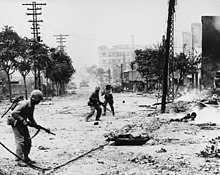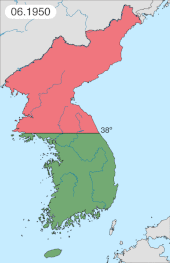Dear Mom and Dad,
Korean
history. Wow. Where to start…
I
supposed what most people at home would be interested in is the modern history,
although that should in no way dismiss the thousands of years of fascinating history
of the Korean peninsula. However, I
understand that what most people outside of Korea know anything about, is a mere
spattering of its modern history. Sadly,
we in the West often dismiss history that is not directly related to the West. Why sadly?
I guess that is a personal opinion, because I am fascinated with history. The life and times of people are not really
so drastically different. We all eat,
sleep, love, marry, have children, work, live.
The rest of living, while it identifies us as unique cultures, is in
reality superficial- surface differences, but that is what we see first. And that is what we, with all of our superficial
human nature, take exception to when we are searching for division. But enough of the personal philosophy! Woo-hoo, heavy!!
Back to history. The
Korean peninsula/people have a long (I mean looong) history and so traditions
and culture identity runs very deep. 5,000
years deep. And because of its unique
positioning, it is often caught smack-dab in the middle of several major
powerful enemies/neutrals/tense-allies at any given time. It has learned to be wary of its
neighbors. They’ve paid that price over
and over and over… Over 1,000 times have they been attacked or invaded by
surrounding countries or large marauding bands of pirates etc. Which works out to be about once every five
years or so, if you go by straight statistics.
Obviously, there were times that the invasion lasted longer, and there
were long stretches of peace and prosperity.
But there has always been an expectation of “Where’s it coming from
next?”
So then comes modern day Korea, which we will say for sake
of understanding begins at the end of the 1890s. The previous Chosun dynasty lasted from the
1300’s to 1897. This was the period of
unification for the Korean peninsula.
So, yes, division in Korea is not new or unprecedented, it has just
become virtually impossible to move between the states now. During prior divisions, there was still trade
and travel, etc. but the Chosun dynasty was kind of the Golden Era for the
Korean peninsula. At least it may have
been in the beginning of that era. The Korean alphabet, hangul, was created by
King Sejong ( a HUGE source of patriotic pride) effectively eliminating illiteracy
(and enraging the aristocracy, of course.
Everything enrages them). Crops
produced almost more than people could consume and with very little
effort. Pictures of restaurants show
heaping bowls of rice and side dishes for one person that would feed entire
families today. And then 1910 rolled
around.
Remember the 1,000 invasions? Well, China and even Russia were sometimes
the cause. But usually it was Japan in
some form or other. Previously just
before the abrupt end of the Chosun dynasty, there was infighting between Korean
peasants and some of the ruling yangban (aristocracy) which led to Qing (Chinese) intervention,
which angered the Japanese ( not necessarily just because of that) and led to the first Sino-Japanese war, between
China and Japan. Most of which was
fought in Korea… All in all, a real big
mess. Not long after the Japanese assassinated
the Korean Empress, the Qing admitted defeat giving Korea independence from the
Chinese. Except, Japan gained control of
the peninsula, which was both good and bad, since the Russians were being a
bother and the Japanese fought them off too in 1905, 7 years after the Chosun
dynasty changed its name. Technically it was still the Chosun dynasty but no
one called it that any more. The bad
came at the same time and of course later as well. Whew - complicted, eh?
When are we getting to the part about the 38th
parallel? Soon, I promise. We’ll get there.
Meanwhile, a lot of ‘stuff’ happened, including the assassination
of the Japanese Prince Ito, Japan’s Resident-General of Korea, in 1909 which
Japan took exception to and then eventually annexed Korea to Japan in 1910. In short.
A lot of other stuff happened too.
Now, Korea and Japan have long had serious tensions and animosity over the centuries, and with some very good reasons. Perhaps we in the West look at it a little lightly, simply because we don’t really know the history. It’s just not our history, so it doesn’t impact us and some might think it’s funny, that intense dislike and distrust, especially since they are allies now (of a sort). But here is a little sample of the most recent animosity that lives on very vividly in the memories of the elders here and passed on to their children and grand-children.
1910, Japan took full control of Korea. Yeah, little more than 100 years ago. Well, they slowly began to create a mini
Japan within Korea. Korean children went
to Japanese school. They learned
Japanese in school. They could be
punished for speaking Korean. Korean
adults were pressed into serving the Japanese in homes and even (sometimes)
forced into Japanese military service, and foreign affairs, to forward the
policies of Japanese rule in Korea.
Koreans were often forced to give up their own Korean names and take on
Japanese names. And then there were the
Comfort Women. Although there is some
debate between various nations over this issue, nevertheless, it remains a
serious issue. A huge, make no mistake, a HUGE source of Korean anger and
hatred toward the Japanese. Especially
in more recent years. For 35 years,
Korean people had to ‘become’ Japanese without ever becoming Japanese, without
ever being treated as fully human to their occupiers. The backlash today: old Japanese infrastructure is totally
abandoned. Japanese style/supplied
housing sits empty and untouched. Old
Japanese bridges are closed off and in disrepair. That, of course, is not all.
Then there was World War II, and V-J day (Victory over Japan
day) after Hiroshima and Nagasaki, and the signing of Japan’s surrender on
September 2, 1945. This is when the US and
its allies first drew a division line at the 38th parallel, where
the US held the southern half and the Soviet Union took over the northern half of
the peninsula.
 |
| Wikipedia- Seoul street combat |
Reunification efforts continued for the next couple of years
and intensified even just months before the Korean War broke out in June of
1950. However, negotiations ultimately
failed, when Kim Il-Sung ordered his troops to move south and attack the south
after convincing China to commit Korean ethnic troops and eventually supplies
to support the north regime. June 25 the
north attacked, while the south technically knew that something was happening,
but dismissed the possibility. The south
was badly outnumbered, outgunned, out-tanked, out-supplied, out-planed, and over-all
just badly under-prepared.
And within
the first few days they were badly beaten, and unfortunately made some
disastrous decisions that led to the abandoning of several military units and killing
thousands of civilians along the way. The
south had 95,000 troops before the war started, and within the first few days
of battle, they had less 22,000. Eventually, the US joined in the battle in
July, using the logic that Japan was in danger and was a key protectorate in
the East and could not be put in danger by the encroaching communist forces.
Long, long story a wee bit shorter. After severe fighting on both sides of the 38th
parallel and three years of civil war and near defeat for the South and the US several
times, along with Chinese forces entering soon after the US entered the fight. Eventually the battle front stabilized just
around the 38th parallel, about an hour’s car ride north of Seoul,
the capital city, which had changed hands at least twice during the war. The only area of Korea that had not seen
northern occupation during the war was the area immediately surrounding the
port city of Busan, nearest major city to Japan. Once the front stabilized the war was pretty much
at a stalemate, neither side gaining or loosing much territory and neither
really giving ground.
 |
| Wikipedia - Orange northern troops movements, Green southern troops |
For now that brings us up to 1953 on general modern Korean history. I must admit that I had to do a little bit of research to find out all
this information. And unfortunately for
expediency’s sake I resorted to Wikipedia.
I know, not the best source of information, but readily available. I also included some anecdotal information as well from friends and teachers and other sources here. If you are interested in anything, I highly
recommend doing your own personal study.
It really is very fascinating!!
Really!!
No comments:
Post a Comment